6.1 Schema Mapping Policy Tasks in Designer
This section contains instructions on performing common tasks related to Schema Mapping policies in Designer:
6.1.1 Accessing the Schema Map Editor
The Schema Map Editor allows you to edit the schema mapping policies. There are two different ways to access the Schema Map Editor in Designer.
To access the Schema Map Editor through the Model Outline:
-
In an open project, click the Outline tab.
-
Click the Model Outline icon.

-
Select the driver you want to manage the schema mapping policy on, and click the plus sign to the right.
-
Double-click the Schema Map icon to launch the Schema Map Editor.
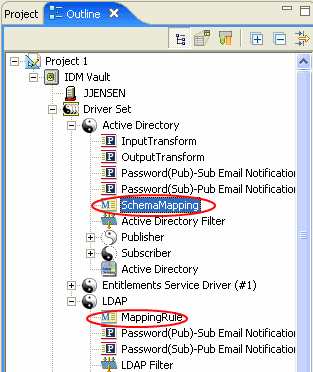
To access the Schema Map Editor through the Policy Flow:
-
In an open project, click the Outline tab.
-
Click the Policy Flow icon.

-
Double-click the Schema Mapping policy as it appears in the Policy Set Manager below the Policy Flow to launch the Schema Map Editor.
Or
Double-click the Schema Mapping icon to launch the Schema Map Editor.
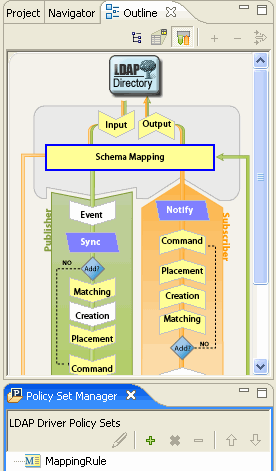
6.1.2 Editing a Schema Mapping Policy
The Schema Map Editor allows you to create and edit schema mapping policies. To display a context menu, right-click an item.
Removing Classes and Attributes
If you do not want a class or an attribute to be mapped to a class or attribute in the connected system, the best practice is to completely remove the class or the attribute from the schema mapping policy. There are two different ways to add or remove attributes and classes from the schema mapping policy:
- Select the class or attribute you want to remove, then right-click in the pane and click .
- Select the class or attribute you want to remove,
then click the icon
 in
the upper-right corner.
in
the upper-right corner. - Select the class or attribute you want to remove, then press the Delete key.
You can select multiple classes or attributes to delete at the same time.
-
Press ctrl and select each item with the mouse.
-
Press the Delete key and the items are deleted.
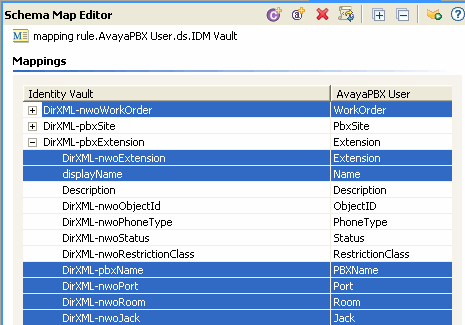
Adding a Class
-
Right-click in the Schema Map Editor, then click .
Or
Select the icon
 in
the upper-right corner.
in
the upper-right corner. -
From the drop-down list for the Identity Vault, select the class you want to add.
-
From the drop-down list for the connected system, select the class you want to add.
-
To save the changes, click > .
Adding a Attribute
-
Right click in the Schema Map Editor, then click .
-
Or select the icon
 in
the upper-right corner.
in
the upper-right corner. -
From the drop-down list for the Identity Vault, select the attribute you want to add.
-
From the drop-down list for the connected system, select the attribute you want to add.
-
To save the changes, click > .
Refreshing the Application Schema
If you have modified the schema in the connected application,
these changes need to be reflected in the Schema Mapping policy.
To make the new schema available, click the icon  in
the toolbar.
in
the toolbar.
When you create a new class or attribute mapping, you can see the new schema in the drop-down list for the connected application.
Editing Items
To edit a mapping, double-click the selected row. An in-place editor appears allowing you to edit the mapping.
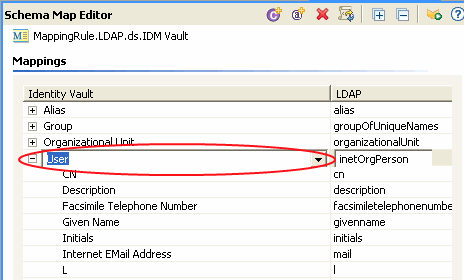
Sorting Items
The Schema editor allows you to sort the items in ascending order based on either Identity Manager or the connected system. To sort, click the header of either column.

6.1.3 Testing Schema Mapping Policies
Designer comes with a new tool called the Policy Simulator. It allows you to test your policies before deploying them. You can launch the Policy Simulator through the Schema Mapping Editor to test your policy after you have modified it.
To access the Policy Simulator and test the Schema Mapping policy:
-
To access the Policy Simulator, click the Launch Policy Simulator icon
 in
the toolbar.
in
the toolbar.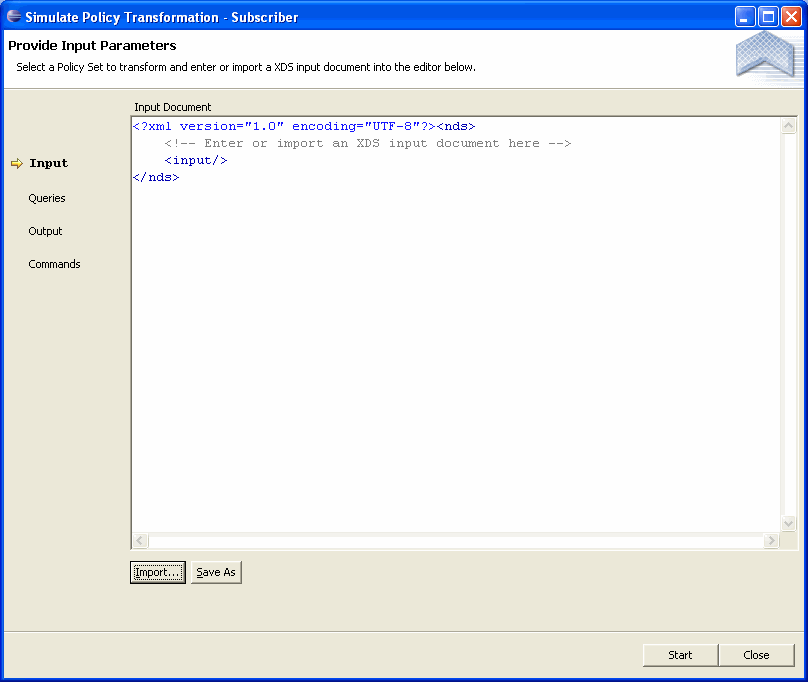
-
Select to browse to a file that simulates an event, then click .
This example uses the \simulation\add\user.xml file, which simulates an Add event of a user object.
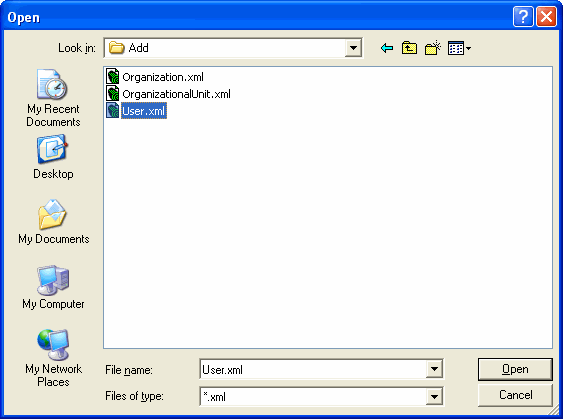
The Policy Simulator displays the input document of the user Add event.
-
Click to begin the simulation.
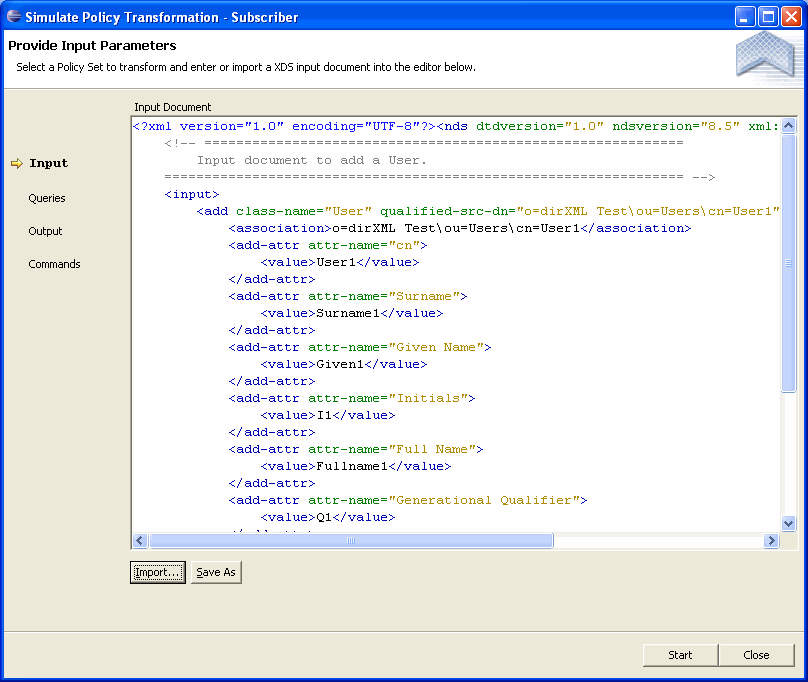
The Policy Simulator displays the log of the Add event as well as the output document. With the radio button set to Log, you see the results of the Add event as you would through DSTRACE. With the radio button set to Output, the Policy Simulator displays the output document.
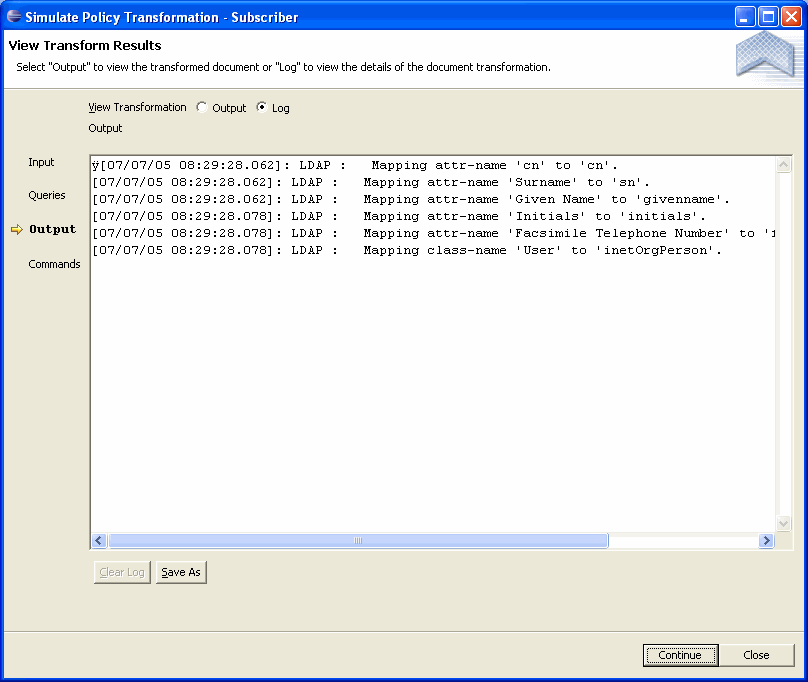
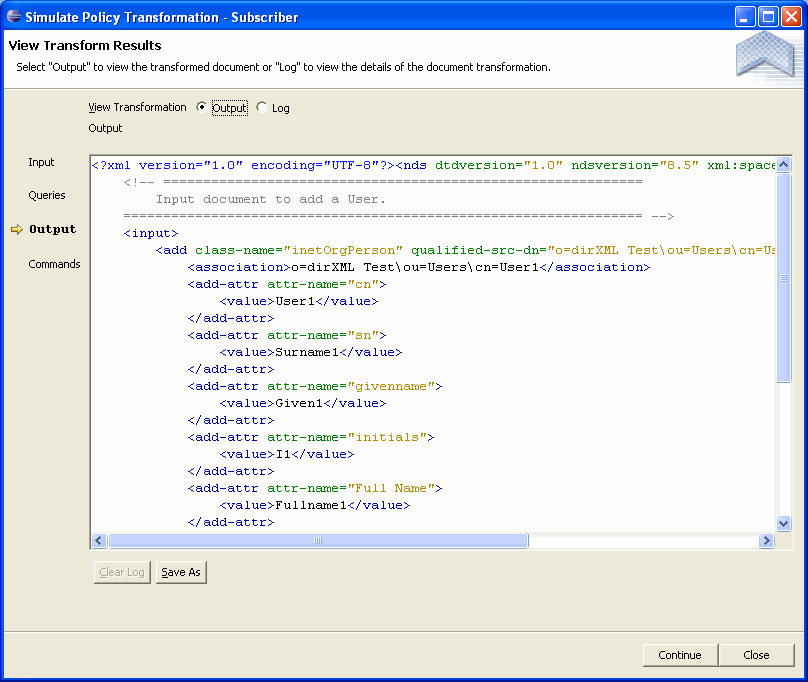
-
Click to select a different input document and see the results of that event.
-
When you have finished testing the Schema Mapping Policy, click to close the Policy Simulator.
You can edit the input and output documents. If you want to keep the changes, click the icon.
6.1.4 Viewing the Schema Mapping Policy XML Source
The Source view enables you to view and edit the XML by using an XML editor or text editor. The default editor that is loaded is associated to .xml file types. If a default editor can’t be found, the system text editor is loaded. The functionality and operations of the Source view are based on the editor that loads.
For more information about the XML source see Editing the DirXML Script.
To open the Source view, select Source at the bottom of the Schema Map Editor’s workspace.
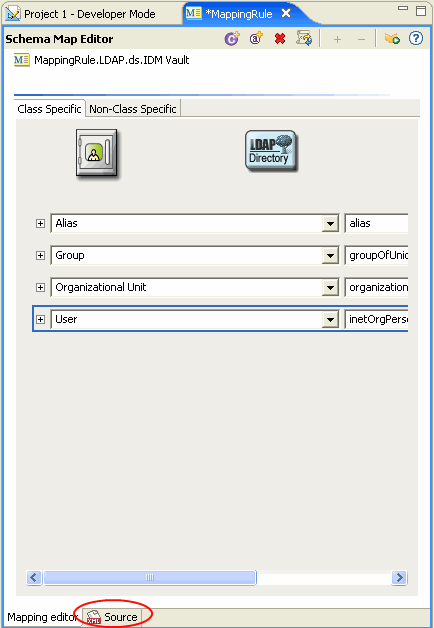
You can edit the XML through the XML editor. You can make changes here as well as through the GUI interface.
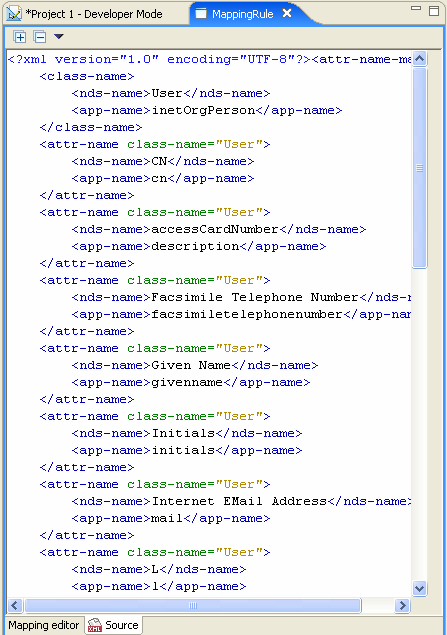
To choose a different XML editor for your source view:
-
From the Main menu, click > .
-
Click > > .
-
Select from the list of file types.
-
Select the editor you want (for example, Novell XML Editor) in the Associated Editors pane. (If the editor you want isn’t in the list, you can click Add, then add it to the list.)
-
Click .
-
Close and reopen the Schema Map Editor. The default editor should be loaded in the Source view.